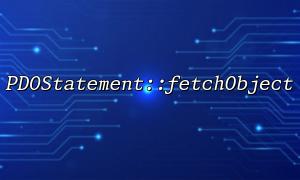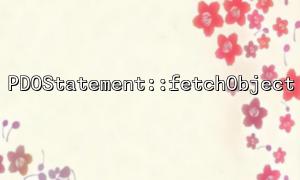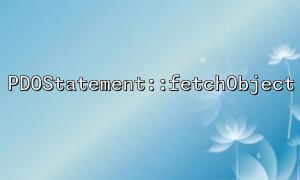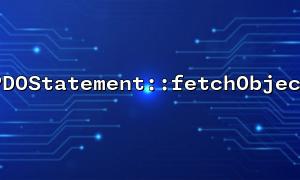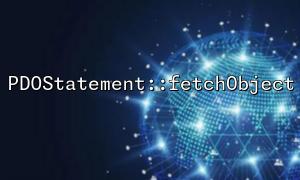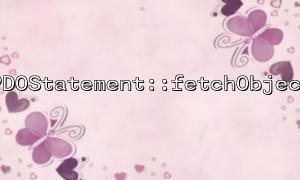When using PHP's PDO (PHP Data Objects) for database operations, PDOStatement::fetchObject is a very convenient way to map the result set directly into an object. But in actual use, we often encounter situations where NULL values exist in the database. If left unprocessed, these NULL values may throw exceptions or unexpected errors in business logic.
This article will explain in detail how to correctly and gracefully handle NULL values in the database when using fetchObject .
fetchObject returns a row of the query result and maps it into an object. The simplest example code is as follows:
<?php
$pdo = new PDO('mysql:host=localhost;dbname=testdb', 'username', 'password');
$stmt = $pdo->query('SELECT id, name, email FROM users WHERE id = 1');
$user = $stmt->fetchObject();
echo $user->name;
In this example, if the email field is NULL in the database, then $user->email will also be NULL .
Normally, PHP is loose in handling NULL , but in specific scenarios, such as when you want to perform string operations on object properties, json serialization, or output on the front end, NULL may cause problems. For example:
echo strlen($user->email); // Report an error:strlen() expects parameter 1 to be string, null given
The most straightforward way is to manually detect the properties before using them:
$email = $user->email ?? '';
echo strlen($email);
Using the empty merge operator in PHP 7+ ?? , it is convenient to give a default value when NULL .
If you want to avoid adding judgments in every place where you use attributes, you can do a unified process after taking out the object, such as:
<?php
function sanitizeNulls($object) {
foreach ($object as $key => $value) {
if (is_null($value)) {
$object->$key = '';
}
}
return $object;
}
$pdo = new PDO('mysql:host=localhost;dbname=testdb', 'username', 'password');
$stmt = $pdo->query('SELECT id, name, email FROM users WHERE id = 1');
$user = $stmt->fetchObject();
$user = sanitizeNulls($user);
echo strlen($user->email); // 现在不会Report an error了
This method is suitable for scenarios where a large number of object properties are uniformly processed at once.
fetchObject allows you to specify a custom class to receive data. NULL can be automatically processed through constructors or custom methods.
<?php
class User {
public $id;
public $name;
public $email;
public function __construct() {
foreach ($this as $key => $value) {
if (is_null($value)) {
$this->$key = '';
}
}
}
}
$pdo = new PDO('mysql:host=localhost;dbname=testdb', 'username', 'password');
$stmt = $pdo->query('SELECT id, name, email FROM users WHERE id = 1');
$user = $stmt->fetchObject('User');
echo strlen($user->email); // 也不会Report an error
Note : When using custom classes, only attributes assigned after object instantiation will pass through the constructor, so this method is suitable for simplifying some scenarios, but not for particularly complex logic.
When using PDOStatement::fetchObject , it is very common to encounter NULL values in the database.
Common treatment methods are:
Make empty merge judgments every time you use attributes.
Use functions to traverse objects in a unified manner and convert all NULLs to default values.
Centralized processing through custom classes.
Depending on your actual project size and complexity, choosing the solution that suits you best can make your code more robust and maintainable.
If you want to learn more about advanced PDO, you can refer to the detailed tutorial here .
Related Tags:
PDOStatement NULL
